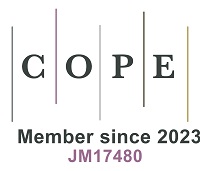REFERENCES
1. IEA. Net zero by 2050: a roadmap for the global energy sector. 2021. Available from: https://www.iea.org/reports/net-zero-by-2050 [Last accessed on 14 May 2025].
2. CPI. Global landscape of climate finance 2023. Available from: https://www.climatepolicyinitiative.org/wp-content/uploads/2023/11/Global-Landscape-of-Climate-Finance-2023.pdf [Last accessed on 14 May 2025].
3. IEA. Renewables 2023. 2024. Available from: https://www.iea.org/reports/renewables-2023 [Last accessed on 14 May 2025].
4. van den Bergh, J.; Castro, J.; Drews, S.; et al. Designing an effective climate-policy mix: accounting for instrument synergy. Clim. Policy. 2021, 21, 745-64.
5. Li, L.; Taeihagh, A. An in-depth analysis of the evolution of the policy mix for the sustainable energy transition in China from 1981 to 2020. Appl. Energy. 2020, 263, 114611.
6. Rayner, J.; Howlett, M.; Wellstead, A. Policy mixes and their alignment over time: patching and stretching in the oil sands reclamation regime in Alberta, Canada. Environ. Policy. Gov. 2017, 27, 472-83.
7. Lam, A.; Mercure, J. F. Which policy mixes are best for decarbonising passenger cars? Simulating interactions among taxes, subsidies and regulations for the United Kingdom, the United States, Japan, China, and India. Energy. Res. Social. Sci. 2021, 75, 101951.
8. Li, K.; Yan, Y.; Zhang, X. Carbon-abatement policies, investment preferences, and directed technological change: evidence from China. Technol. Forecast. Soc. Chang. 2021, 172, 121015.
9. Zhang, Z.; Zhang, A.; Wang, D.; Li, A.; Song, H. How to improve the performance of carbon tax in China? J. Clean. Prod. 2017, 142, 2060-72.
10. Axsen, J.; Plötz, P.; Wolinetz, M. Crafting strong, integrated policy mixes for deep CO2 mitigation in road transport. Nat. Clim. Chang. 2020, 10, 809-18.
11. Bhardwaj, C.; Axsen, J.; Mccollum, D. Which “second-best” climate policies are best? Simulating cost-effective policy mixes for passenger vehicles. Resour. Energy. Econ. 2022, 70, 101319.
12. Savin, I.; Drews, S.; van den Bergh, J. Carbon pricing - perceived strengths, weaknesses and knowledge gaps according to a global expert survey. Environ. Res. Lett. 2024, 19, 024014.
13. UNFCCC. Summary and recommendations by the standing committee on Finance. 2022. Available from: https://unfccc.int/sites/default/files/resource/J0156_UNFCCC%20BA5%202022%20Summary_Web_AW.pdf [Last accessed on 14 May 2025].
14. Ellis, J.; Caruso, R.; Ockenden, S. Exploring climate finance effectiveness. In Climate Change Expert Group Paper No. 2013(4); OECD Publishing, 2013. Available from: https://www.oecd.org/content/dam/oecd/en/publications/reports/2013/10/exploring-climate-finance-effectiveness_g17a245b/5jzb44nmnbd2-en.pdf [Last accessed on 14 May 2025].
15. OECD. Climate finance provided and mobilised by developed countries: aggregate trends updated with 2019 data; OECD Publishing, 2021.
16. de Souza Cunha, F. A. F.; Meira, E.; Orsato, R. J.; Klotzle, M. C.; Lucena, A. F. P. Do low-carbon investments in emerging economies pay off? Evidence from the Brazilian stock market. Int. Rev. Financ. Anal. 2021, 74, 101700.
17. Goulder, L. H.; Long, X.; Qu, C.; Zhang, D. China’s nationwide Co2 emissions trading system: a general equilibrium assessment. National Bureau of Economic Research Publishing, 2023.
18. Mo, J.; Zhang, W.; Tu, Q.; et al. The role of national carbon pricing in phasing out China's coal power. iScience 2021, 24, 102655.
19. Xuan, D.; Ma, X.; Shang, Y. Can China’s policy of carbon emission trading promote carbon emission reduction? J. Clean. Prod. 2020, 270, 122383.
20. Zeng, A.; Sheng, Y.; Gu, B.; Wang, Z.; Wang, M. The impact of climate aid on carbon emissions reduction and the role of renewable energy: evidence from the Belt and Road countries. Environ. Sci. Pollut. Res. Int. 2022, 29, 77401-17.
21. Peters, B. G.; Capano, G.; Howlett, M.; Mukherjee, I.; Chou, M. H.; Ravinet, P. Designing for policy effectiveness; Cambridge University Press, 2018.
22. Gunningham, N.; Grabosky, P.; Sinclair, D. Smart regulation: designing environmental policy; Clarendon Press, 1998.
23. Skjærseth, J. B. Towards a European green deal: the evolution of EU climate and energy policy mixes. Int. Environ. Agreements. 2021, 21, 25-41.
24. Chen, X.; Huang, P.; Xiao, Z. Uncovering the verticality and temporality of environmental policy mixes: the case of agricultural residue recycling in China. Rev. Policy. Res. 2022, 39, 632-53.
25. Ma, W.; de Jong, M.; de Bruijne, M.; Mu, R. Mix and match: configuring different types of policy instruments to develop successful low carbon cities in China. J. Clean. Prod. 2021, 282, 125399.
26. Pahle, M. Pricing carbon for a fair and effective low-carbon road transport transition in the EU. One. Earth. 2023, 6, 7-10.
27. Edmondson, D. L.; Kern, F.; Rogge, K. S. The co-evolution of policy mixes and socio-technical systems: towards a conceptual framework of policy mix feedback in sustainability transitions. Res. Policy. 2019, 48, 103555.
28. Sun, Y. T. Craft an innovative and synergic policy framework for enabling climate investment and financing. Environ. Prot. 2023, 51, 38-41.
29. Migo-Sumagang, M. V.; Tan, R. R.; Aviso, K. B. A multi-period model for optimizing negative emission technology portfolios with economic and carbon value discount rates. Energy 2023, 275, 127445.
30. Duan, H.; Yang, J. The evaluation of role of policy synergies in achieving China’s INDC targets. J. Environ. Econ. 2018, 3, 11-26.
31. Qiu, Y. Q.; Tsan Sheng Ng, A.; Zhou, P. Optimizing urban electric vehicle incentive policy mixes in China: perspective of residential preference heterogeneity. Appl. Energy. 2022, 313, 118794.
32. Wang, X.; Zou, H.; Zheng, Y.; Jiang, Z. How will different types of industry policies and their mixes affect the innovation performance of wind power enterprises? Based on dual perspectives of regional innovation environment and enterprise ownership. J. Environ. Manag. 2019, 251, 109586.
33. Gosens, J.; Kåberger, T.; Wang, Y. China's next renewable energy revolution: goals and mechanisms in the 13th Five Year Plan for energy. Energy. Sci. Eng. 2017, 5, 141-55.
34. Hood, C.; Margetts, H. The tools of government in the digital age; Bloomsbury Publishing, 2007. Available from: https://www.oii.ox.ac.uk/research/publications/the-tools-of-government-in-the-digital-age/ [Last accessed on 16 May 2025].
35. Thelen, K. Institutional change in advanced political economies. Brit. J. Ind. Relat. 2009, 47, 471-98.
37. Chang, K. Economic effect of renewable energy's subsidy policies based on the perspective of costs and benefits. J. Ind. Technol. Econ. 2015, 34, 98-105.
38. Lin, B.; Chen, Y. Impacts of policies on innovation in wind power technologies in China. Appl. Energy. 2019, 247, 682-91.
39. Zha, D.; Jiang, P.; Zhang, C.; Xia, D.; Cao, Y. Positive synergy or negative synergy: an assessment of the carbon emission reduction effect of renewable energy policy mixes on China's power sector. Energy. Policy. 2023, 183, 113782.
40. IRENA. Renewable power generation costs in 2022. 2023. Available from: https://www.irena.org/Publications/2023/Aug/Renewable-Power-Generation-Costs-in-2022 [Last accessed on 14 May 2025].
41. IRENA. Renewable power generation costs in 2020. 2021. Available from: https://www.irena.org/publications/2021/Jun/Renewable-Power-Costs-in-2020 [Last accessed on 14 May 2025].
42. Institute of Climate Change, and Sustainable Development of Tsinghua University. China's long-term low-carbon development strategies and pathways: comprehensive report; Springer Nature Publishing, 2022.
43. Kong, L.; Tan, X.; Gu, B.; Yan, H. Significance of achieving carbon neutrality by 2060 on China's energy transition pathway: a multi-model comparison analysis. Adv. Clim. Chang. Res. 2023, 14, 32-42.
44. NEA. New power system development blue book; China Electric Power Press, 2023. Available from: https://www.nea.gov.cn/download/xxdlxtfzlpsgk.pdf [Last accessed on 16 May 2025].
45. Savin, I.; King, L. C.; van den Bergh, J. Analysing content of Paris climate pledges with computational linguistics. Nat. Sustain. 2025, 8, 297-306.








